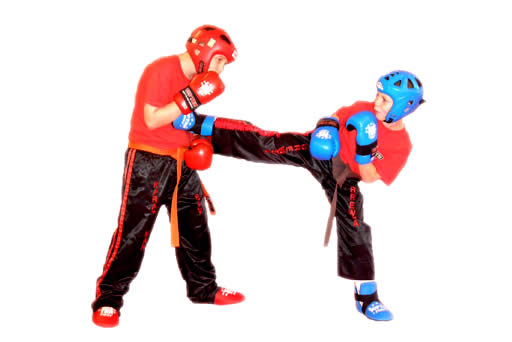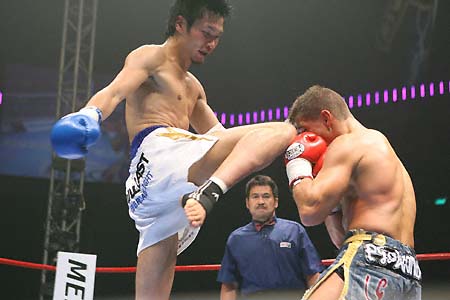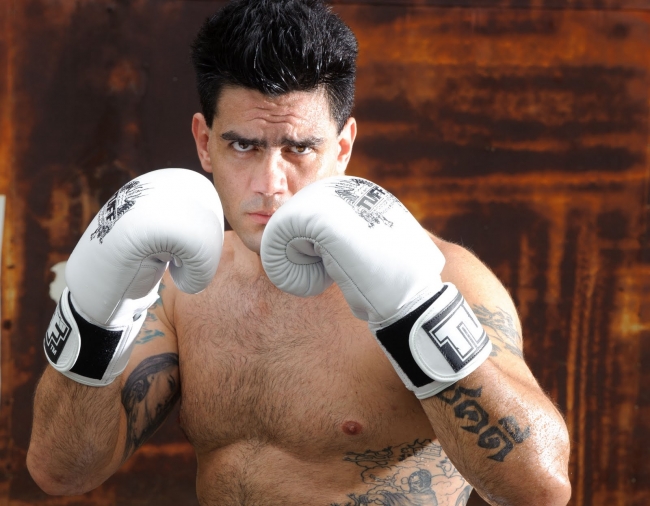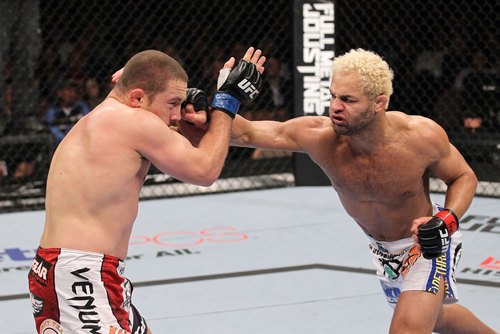
Kickboxing is recently being adopted in most of the gyms and fitness programs as one of the latest fitness trends. One may see the traces of different popular arts in kick boxing like boxing, aerobics and even martial arts. These modified workouts, inspired from the moves of different techniques, are motivating many people to participate in various fitness programs.
Benefits of kickboxing
Kickboxing is an intense workout program providing a complete body workout, improving strength, body fitness and flexibility, coordination and balance. It is also noted that a one hour workout of kickboxing burns out around 500 to 800 calories which is around twice that of calories burnt in a one hour class of step aerobics.
Though it is a quite perfect program, there are many variations done to kickboxing according to their area of application and some added or removed aspects. The different variations of kickboxing are:
Muay Thai
Muay Thai (also called Thai boxing) is practiced in Thailand and is its national sports too. It is a combatant martial art form. In Muay Thai, stand-up strikes with a number of clinching techniques. It was evolved and developed many centuries ago from the older Muay Boran (a form of ancient boxing), to close combat utilizing the whole body as a weaponry.
It is referred to as an ‘art/science of eight limbs’ due to the use of eight striking points like punches (chok), kicks (te), elbows (ti sok) and knee strikes (ti khao), while boxing uses only two points (fists) and kick boxing uses four points (all four limbs).
Japanese kick boxing
Japanese kick boxing was developed from a synthesis of Muay Thai and various forms of karate styles (especially Kyokushin). Initially, kickboxers were said to be the students of karate, goju-ryu and kenpo and they later learned Muay Thai and fused their well learnt arts with Muay Thai in their own way to make Japan’s kick boxing. If one looks closely at this whole style, they will see the combination of Muay Thai with English boxing.
International kick boxing
International kickboxing is a platform for worldwide kick boxers. This form of kick boxing can be termed as the traditional Muay Thai without knee strikes, elbow strikes and clinching. One may say that kick boxing is a much more disciplined form of ancient Muay Thai.
Other than the above mentioned differences, the two are quite same in every aspect. Both use rings in competitions, both of them have referees, both use weighed gloves, and both have to hold competitions with respect to weight divisions.
American full contact kick boxing
American kick boxing is a full contact martial art having its roots in the early 1970s. This style is a combination of martial arts with western boxing style, involving punching and kicking your opponent. Striking with the knees and elbows is not allowed.
This is a devastating technique and is easy to learn. It has rules of using fists and feet only above the waist and one may add foot sweeps too. It differs from American karate by just the addition of foot and leg sweeps.
K1 kick boxing
K-1 kickboxing is a worldwide promotional kickboxing which was founded in Japan by a karate (Kyokushin) professional. It mixes the techniques of Muay Thai with that of karate, tae-kwon-do, Française-Savate, San-Shou, Western style boxing, and other professional martial arts. It has similar rules as those of kick boxing but a simplification has been brought about so as to promote the resulting exciting matches that may end up in a K.O. (knock out) win. K-1 allows the use of knees and a limited amount of clinching too, which is forbidden in International kickboxing, making it unique in its own way.
Note: ‘K’ in the K-1 refers to the use of its base art forms, i.e., karate, kung-fu and kickboxing.
SanDa/SanShou
SanShou is a martial art originated in China by the Chinese military by the thorough study of different traditional styles and combining them with advanced techniques for the purpose of better military training.
SanShou is practiced with safety equipment and the competitions are held under rules which restrict some tactics and techniques. However, SanShou is also used as a complete martial art teaching kicking, striking, leg kicks, kick catches, leg sweeps, take downs and hip/shoulder throws. SanShou has currently three variants:
- Doesn’t allow knee/elbow strikes.
- Allows knee/elbow strikes.
- Allows knees only.
Shootboxing
Shootboxing is an MMA (mixed martial art) of Japanese kickboxing allowing the wrestling throws and no-gi Judo. It can also be stated as a standard Muay Thai technique with throws, and limited standing submissions (choke-holds, arm-locks and wrist-locks) and take-downs. Its creator is Caesar Takeshi who is very well known in the field of kickboxing.
La Boxe Française Savate
La Boxe Française Savate, translated as French boxing/kickboxing/foot-fighting, is a type of MMA (mixed martial art) practiced in France. It is a combat sport for two adversaries equipped with gloves and shoes unlike Muay Thai which doesn’t use shoes and rather combatants use bare feet as weapons.
It can be called as a combination of Western-style boxing with graceful kick techniques. Only fists and foot-kicks are allowed in Savate kickboxing unlike some systems such as Muay Thai. Use of the knees or shins and clinching aren’t allowed.
Adithada (Indian kickboxing)
Adithada is a type of ancient Indian martial art founded a couple of thousand years ago and is believed to be influential on the art of kickboxing as kickboxing was founded much later than Adithada. The roots of this art lie in Southern India and it is meant to be used as a preliminary practice or the empty-hand practice for kalaripayattu, another South Indian martial art involving a sword. Adithada allows the performers to prepare and train themselves for kalaripayattu for many years before starting the training with weapons. The combatant can use their fists, feet, elbow, knees and forehead. It is very similar to Bokarto’s style of martial art.


